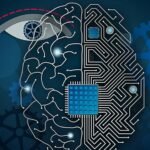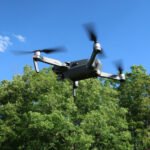Natural Language Processing: AI techniques for understanding and processing human language.
Text Understanding: NLP techniques are used to analyze and understand the meaning of text. This involves tasks such as part-of-speech tagging, named entity recognition, syntactic parsing, and semantic role labeling. By extracting information from text, NLP systems can gain a deeper understanding of its content.
Sentiment Analysis: NLP enables the analysis of sentiment or opinion expressed in text. Sentiment analysis techniques can determine whether a text expresses a positive, negative, or neutral sentiment. This is valuable for understanding customer feedback, social media sentiment, and public opinion on various topics. Language Translation: NLP plays a crucial role in machine translation, which involves automatically translating text or speech from one language to another. Statistical machine translation and neural machine translation are examples of NLP approaches used for language translation tasks.
Information Extraction: NLP techniques allow the extraction of structured information from unstructured text. This involves tasks such as named entity recognition, relation extraction, and event extraction. Information extraction enables the organization and retrieval of relevant information from large text corpora.
Question Answering: NLP can be used to develop question answering systems that can understand questions posed in natural language and provide accurate answers. This involves techniques such as text comprehension, information retrieval, and knowledge representation. Text Generation: NLP techniques are utilized to generate human-like text.
This includes applications such as text summarization, text completion, and dialogue generation. NLP models can generate coherent and contextually appropriate text based on given input or prompts.
Chatbots and Virtual Assistants: NLP powers chatbots and virtual assistants that can interact with users in natural language. These systems use techniques such as natural language understanding and dialogue management to provide automated conversational experiences. Speech Recognition and Text-to-Speech: NLP is employed in speech recognition systems that convert spoken language into written text. Additionally, NLP techniques are used in text-to-speech systems that generate spoken language from written text, enabling voice-based interactions.
NLP techniques rely on various AI methods, including machine learning, deep learning, and linguistic analysis. They continue to advance and find applications in areas such as customer service, healthcare, information retrieval, language translation, and many more.


































